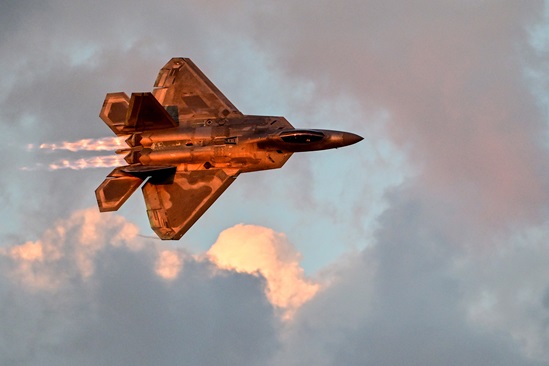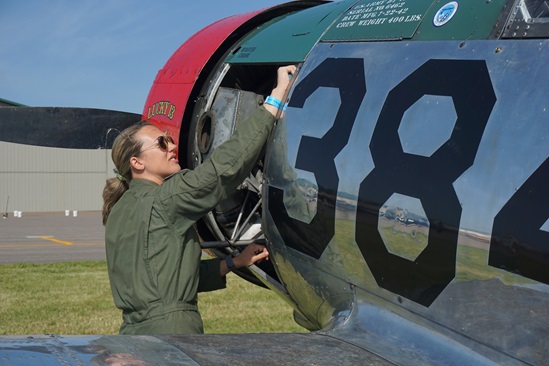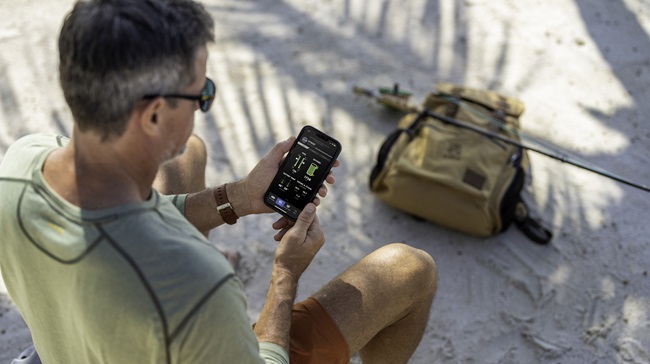A grand adventure
Formerly rusty pilots fly to EAA AirVenture
Two formerly rusty pilots teamed up to travel to EAA AirVenture in Oshkosh, Wisconsin, in July.
Along the way, they became reacquainted with the mantra of flexibility that is the hallmark of VFR cross-country flight.
Rogal can fly light sport aircraft under the sport pilot rules, but he is flying his own Cessna 172 with a certificated flight instructor while he waits for his medical certification to be approved. He became a private pilot and got an instrument rating in 1973, but hadn’t flown since 1999.
“I am thrilled that I [am flying],” he said. “I didn’t realize how much I missed it until I got back into it.”
When he bought the Cessna 172, he said, it was decorated with decals from the previous owner’s many trips to AirVenture. Helen Woods, owner of Chesapeake Sport Pilot, quipped that he “needed to keep the streak going.” Rogal wanted to go to AirVenture—it would be his first time—but he needed someone to act as pilot in command for the trip from Maryland to Wisconsin.
Meanwhile, Keller had been out of the cockpit 20 to 25 years. Before he met Rogal, he logged about 20 hours of ground and flight time to get current. “It might have been a little bit of overkill, but considering the airspace we fly in, I’m OK with that,” Keller said. Stevensville Airport sits just outside the Washington, D.C., Special Flight Rules Area.
Keller and Rogal flew together a few times to ensure they were compatible, and then began planning their trip. Keller’s 15-year-old son, Calvin, was a passenger.
Weather woes
Initial plans to depart July 21 went south with the weather forecasts. Rogal and the Keller instead took off July 20. After stopping for fuel in Kentucky, they flew as far south as Nashville, Tennessee, to get around a line of weather making its way north and east along the Appalachians.
On Saturday they reached Madison, Wisconsin, and found a hotel room there in the hopes of launching for Wittman Regional Airport on Sunday morning. “We kept an eye on the weather and it continued to be marginal VFR with the terminal forecasts at least through noon,” Keller said. “We stayed later at the hotel than we probably should have.”
By now you might have read reports—or maybe you were there—of the hundreds of pilots who flew into AirVenture on that Sunday. So much traffic stacked up that harried air traffic controllers began instructing everybody to “turn left.”
“We went around Green Lake eight times, Rush Lake three times, and another four times we exited the approach to FISKE from RIPON because the airplanes got too crowded,” Keller said. “We’d get lined up with nice spacing at RIPON, but by the time we got to FISKE, we’d have airplanes coming in from the left and the right. It was like we were doing formation flying.” What would normally be a 35-minute flight stretched into three hours and 15 minutes.
After so many circles, backseat passenger Calvin Keller began to get airsick. Rogal notified ATC, and the controller cleared them to climb to 2,300 feet and then to complete the FISKE arrival. At 7:45 p.m.—15 minutes before the airport closed for the day—the Cessna 172 touched down on the green dot on Runway 36L at Oshkosh. The flight from Maryland had taken 17 hours total.
Fun on the South 40
With the North 40 camping area full, the Cessna 172 was directed to taxi to the South 40. “We passed the first cornfield and we kept going south,” Keller said. “I’m thinking we’re going to taxi back to Madison.” He and Rogal had nothing but praise for the EAA volunteers who greeted them. It was now past 8 p.m. and their camping equipment, which they’d shipped separately, was locked up for the night. Volunteers opened the building, located their boxes, and borrowed a truck to transport the gear to their campsite. The travelers set up their tents and collapsed into their inflatable beds. They spent the week at AirVenture, with Calvin Keller flying simulators at the AOPA and Redbird Flight Simulations exhibits.
The trip back to Maryland was a mere seven hours. Calvin did some of the flying and said the time he’d spent on the simulators at AirVenture helped him put some aeronautical concepts together. Keller wants to get a light sport flight instructor certificate so that he can teach Calvin and his twin sister, Sophia, how to fly.
Rogal and Keller are already talking about 2019. They’d like to fly together to Lakeland, Florida, for the Sun ‘n Fun International Fly-In. And of course they want to go back to AirVenture. They might have to take two airplanes, though—because Keller wants to bring both Calvin and Sophia.
“I absolutely look forward to doing it again,” Keller said. “If I could do it every year I would. The cost of sharing fuel and airport fees and oil was incomparable to renting.”
“It was a grand adventure,” Rogal said. “Joey and I were of like minds. We were going for the experience. It didn’t really matter how long it took to get there.”





